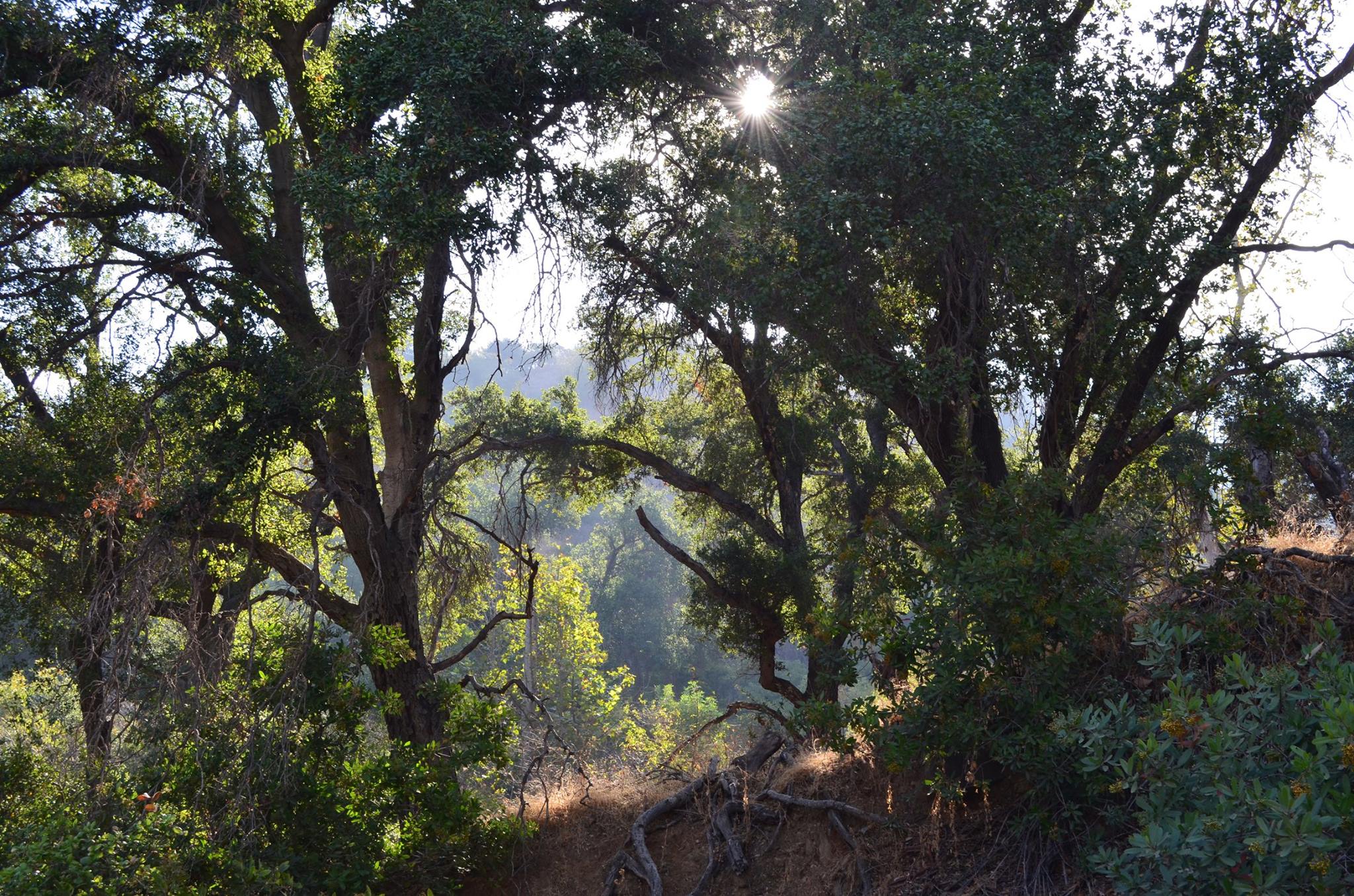The first commemortaes the Feliz Family who traveled on the expedition and became an important family in the Los Angeles Area. The second wayside talks about the native landscapes of Southern California.
 Fern Canyon, Griffith Park (Image courtesy of Friends of Griffith Park)
Fern Canyon, Griffith Park (Image courtesy of Friends of Griffith Park)
Southern California Landscapes
California is one of five Mediterranean ecosystems around the planet. These areas are known for their temperate climates characterized by mild, rainy winters and warm, dry summers that promote a high degree of rich biodiversity.The Anza Expedition traveled through varied and distinct landscapes in Southern California to reach the Los Angeles Basin. Some of the distinct vegetation communities they experienced include: the vast Sonoran and Colorado Deserts, mixed woodlands, large stands of chaparral, and coastal sage
scrub.
Native Ecosystems of Southern California
This map shows the general range for native plant communities in Southern California before urbanization and modern agriculture and the route of the Anza Expedition. Which plant communities seem the most dominant?

Desert
Desert scrub covers the majority of the desert floor and the lower slopes of the eastern facing foothills and is known for wildflower blooms in wet years. Common plants include the creosote bush, burrowed, desert thorn, ocotillo, and beavertails/chollas.Foothills
Chaparral is the most prominent and widespread plant community in California. It is characterized byrigid, woody, dense shrubs and can be found along the foothills. Common plants include manzantia, ceanothus, toyon, and scrub oaks.
Valleys and Coast
Coastal Sage Scrub favors lower-elevation, semi-arid habitats along the coast and is also found inland within the foothill rain shadows. Common plants include California sagebrush, lupins, California buckwheat, a variety of sages, and coyote brush.Paisajes del sur de California
California es uno de cinco ecosistemas mediterráneos de todo el planeta. Estas áreas son conocidas por sus climas templados caracterizados por inviernos suaves y lluviosos y veranos calurosos y secos que promueven un alto grado de rica biodiversidad.
La Expedición Anza viajó a través de paisajes variados y distintos en el sur de California para llegar a la Cuenca de Los Ángeles. Algunas de las diferentes comunidades de vegetación en que experimentaron incluyeron: los vastos desiertos de Sonora y Colorado, los bosques mixtos, las grandes masas de chaparral y los arbustos de salvia.
Ecosistemas Nativos del Sur de California
Este mapa muestra el rango general para las comunidades de plantas nativas en el Sur de California antes de la urbanización, la agricultura moderna y la ruta de la Expedición Anza. ¿Qué comunidades de plantas parecen ser las más dominantes?
Desierto
El matorral del desierto cubre la mayor parte del suelo del desierto, las laderas más bajas de las laderas orientales y es conocido por las flores de flores silvestres en los años húmedos. Las plantas comunes incluyen el arbusto de creosota, la madriguera, la espina del desierto, el ocotillo y las colitas.
Chaparral
Chaparral es la comunidad vegetal más prominente y extendida en California. Se caracteriza por arbustos rígidos, leñosos, densos y se puede encontrar a lo largo de las estribaciones. Las plantas comunes incluyen manzantia, ceanothus, toyon y matorrales.
Coastal Sage Scrub
Coastal Sage Scrub favorece los hábitats semiáridos de baja elevación a lo largo de la costa y también se encuentra adentro las estribaciones de las sombras de lluvia. Las plantas comunes incluyen la artemisa de California, los altramuces, el alforfón de California, una variedad de sabios y la brocha de coyote.
About Griffith Park:
With over 4,210 acres of both natural chapparal-covered terrain and landscaped parkland and picnic areas, Griffith Park is one of the largest municipal parks with urban wilderness areas in the United States. Situated in the eastern Santa Monica Mountain range, the Park’s elevations range from 384 to 1,625 feet above see level. With an arid climate, the Park’s plant communities vary from coastal sage scrub, oak and walnut woodlands to riparian vegetation with trees in the Park’s deep canyons. The California native plants represented in Griffith Park include the California species of oak, walnut, lilac, mountain mahagony, sages, toyon, and sumac. Present, in small quantities, are the threatened species of manzanita and berberis.Horseback riders, hikers and runners routinely enjoy Griffith Park’s segment of the Anza Trail – a distance of approximately 4 miles. It can be accessed at the Park’s northwest end opposite the Equestrian Center or at its southeast terminus near the Pony/Train Ride concession at the Park’s Los Feliz entrance. In some places it passes through remnants of oak woodland communities and is shaded by heritage oaks and ancient sycamores. Elsewhere, it skirts picnic grounds and Wilson-Harding Golf Course offering views of the Park’s foothills. Be forewarned that some sections of the trail are less than ideal and that problems with upkeep and freeway noise will affect enjoyment.
